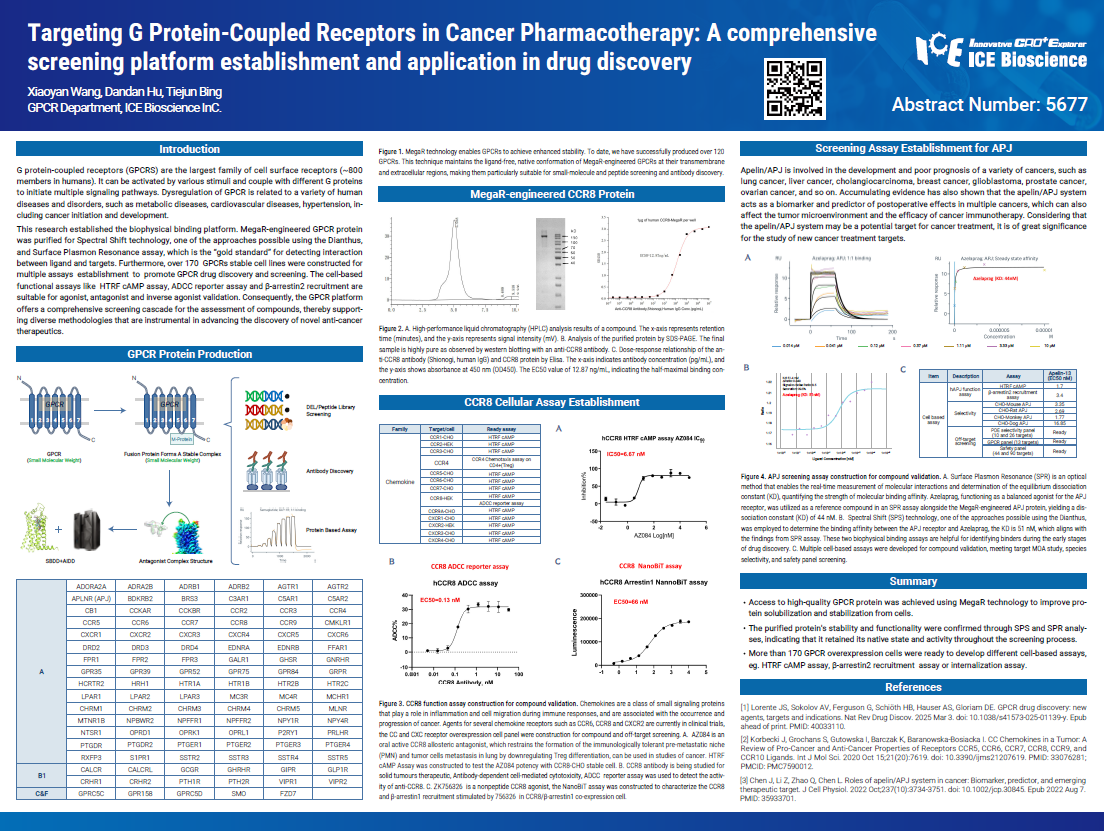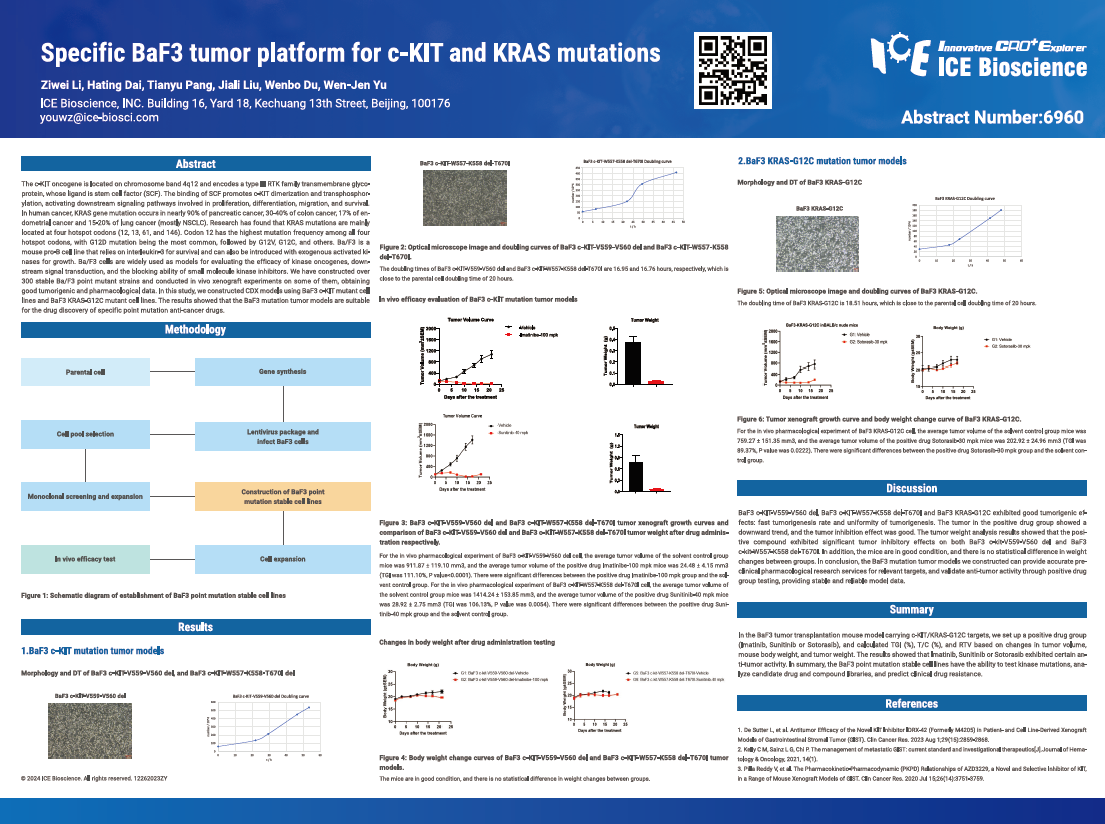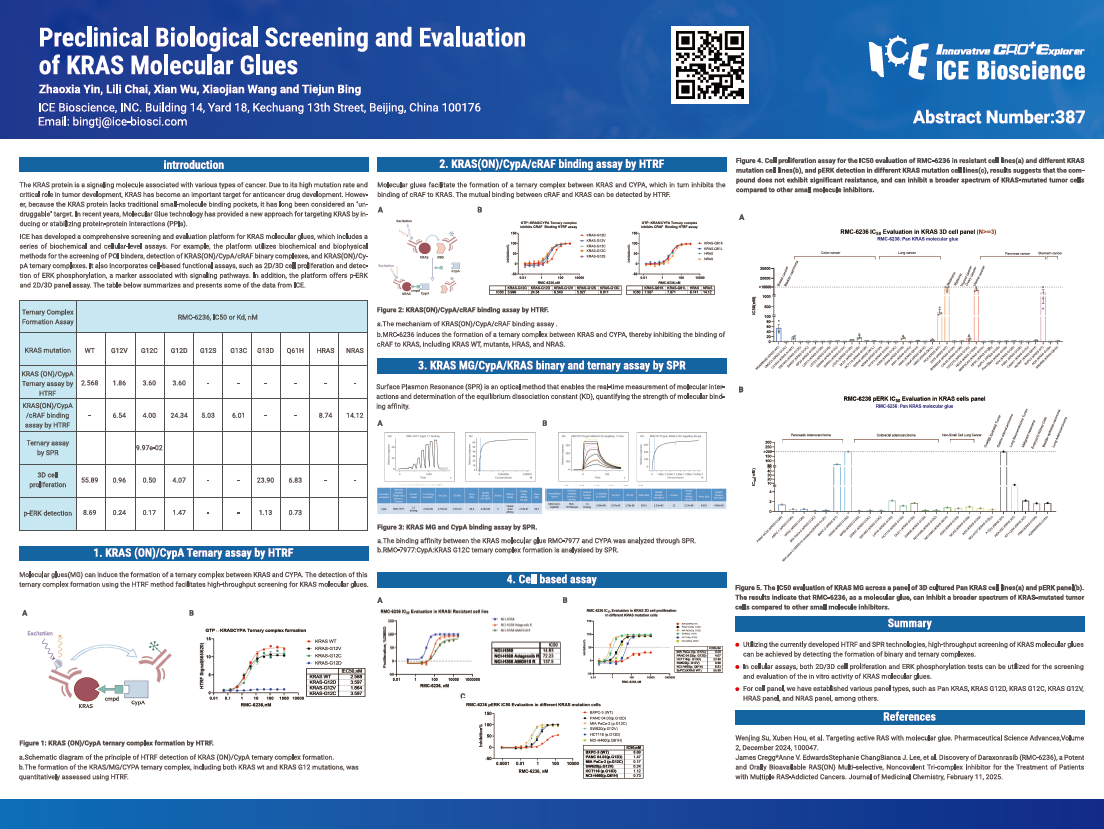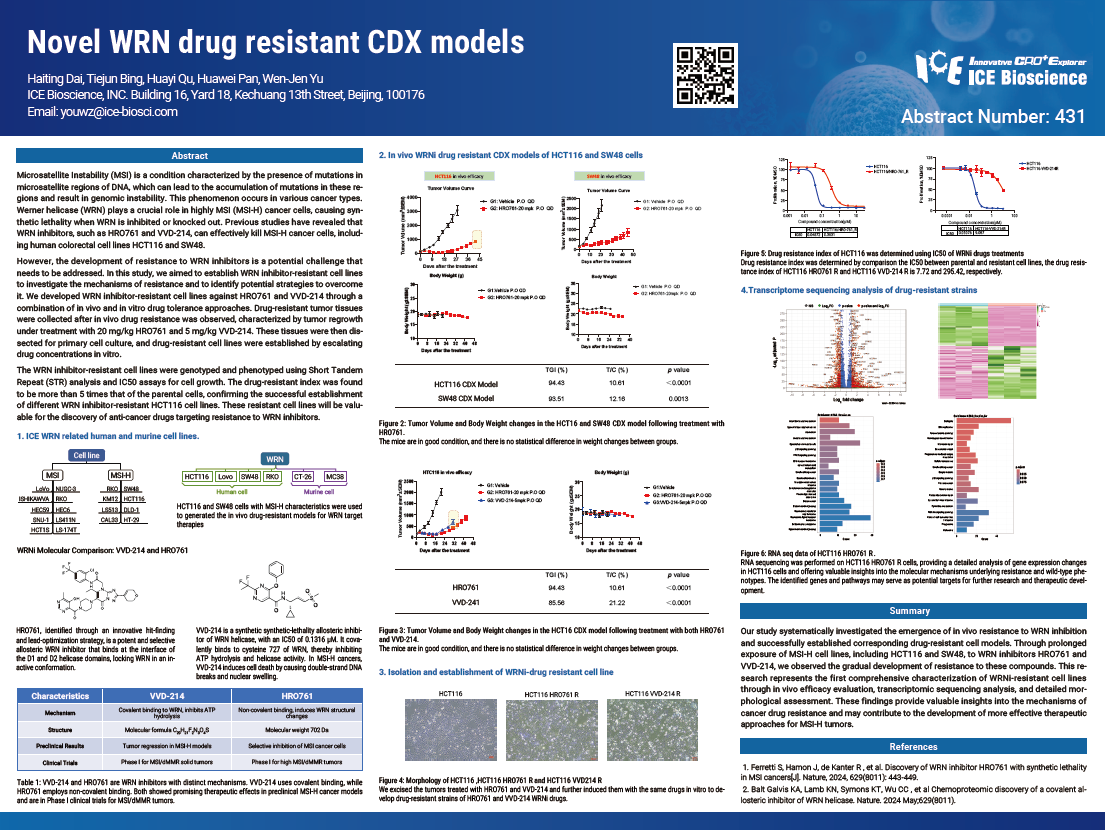
G protein-coupled receptors (GPCRS) are the largest family of cell surface receptors (~800 members in humans). It can be activated by various stimuli and couple with different G proteins to initiate multiple signaling pathways. Dysregulation of GPCR is related to a variety of human diseases and disorders, such as metabolic diseases, cardiovascular diseases, hypertension, including cancer initiation and development.
This research established the biophysical binding platform. MegaR-engineered GPCR protein was purified for Spectral Shift technology, one of the approaches possible using the Dianthus, and Surface Plasmon Resonance assay, which is the "gold standard" for detecting interaction between ligand and targets. Furthermore, over 170 GPCRs stable cell lines were constructed for multiple assays establishment to promote GPCR drug discovery and screening. The cell-based functional assays like HTRF cAMP assay, ADCC reporter assay and β-arrestin2 recruitment are suitable for agonist, antagonist and inverse agonist validation. Consequently, the GPCR platform offers a comprehensive screening cascade for the assessment of compounds, thereby supporting diverse methodologies that are instrumental in advancing the discovery of novel anti-cancer therapeutics.

The c-KIT oncogene is located on chromosome band 4q12 and encodes a type Ill RTK family transmembrane glycoprotein, whose ligand is stem cell factor (SCF). The binding of SCF promotes c-KIT dimerization and transphosphorylation, activating downstream signaling pathways involved in proliferation, differentiation, migration, and survival. In human cancer, KRAS gene mutation occurs in nearly 90% of pancreatic cancer, 30-40% of colon cancer, 17% of endometrial cancer and 15-20% of lung cancer (mostly NSCLC). Research has found that KRAS mutations are mainly located at four hotspot codons (12, 13, 61, and 146). Codon 12 has the highest mutation frequency among all four hotspot codons, with G12D mutation being the most common, followed by G12V, G12C, and others. Ba/F3 is a mouse pro-8 cell line that relies on interleukin-3 for survival and can also be introduced with exogenous activated kinases for growth. Ba/F3 cells are widely used as models for evaluating the efficacy of kinase oncogenes, downstream signal transduction, and the blocking ability of small molecule kinase inhibitors. We have constructed over 300 stable Ba/F3 point mutant strains and conducted in vivo xenograft experiments on some of them, obtaining good tumorigenic and pharmacological data. In this study, we constructed CDX models using BaF3 c-KIT mutant cell lines and BaF3 KRAS-G12C mutant cell lines. The results showed that the BaF3 mutation tumor models are suitable for the drug discovery of specific point mutation anti-cancer drugs.

The KRAS protein is a signaling molecule associated with various types of cancer. Due to its high mutation rate and critical role in tumor development, KRAS has become an important target for anticancer drug development. However, because the KRAS protein lacks traditional small-molecule binding pockets, it has long been considered an "undruggable" target. In recent years, Molecular Glue technology has provided a new approach for targeting KRAS by inducing or stabilizing protein-protein interactions (PPls).

Microsatellite Instability (MSI) is a condition characterized by the presence of mutations in microsatellite regions of DNA, which can lead to the accumulation of mutations in these re- gions and result in genomic instability. This phenomenon occurs in various cancer types. Werner helicase (WRN) plays a crucial role in highly MSI (MSI-H) cancer cells, causing syn- thetic lethality when WRN is inhibited or knocked out. Previous studies have revealed that WRN inhibitors, such as HRO761 and VVD-214, can effectively kill MSI-H cancer cells, includ- ing human colorectal cell lines HCT116 and SW48.